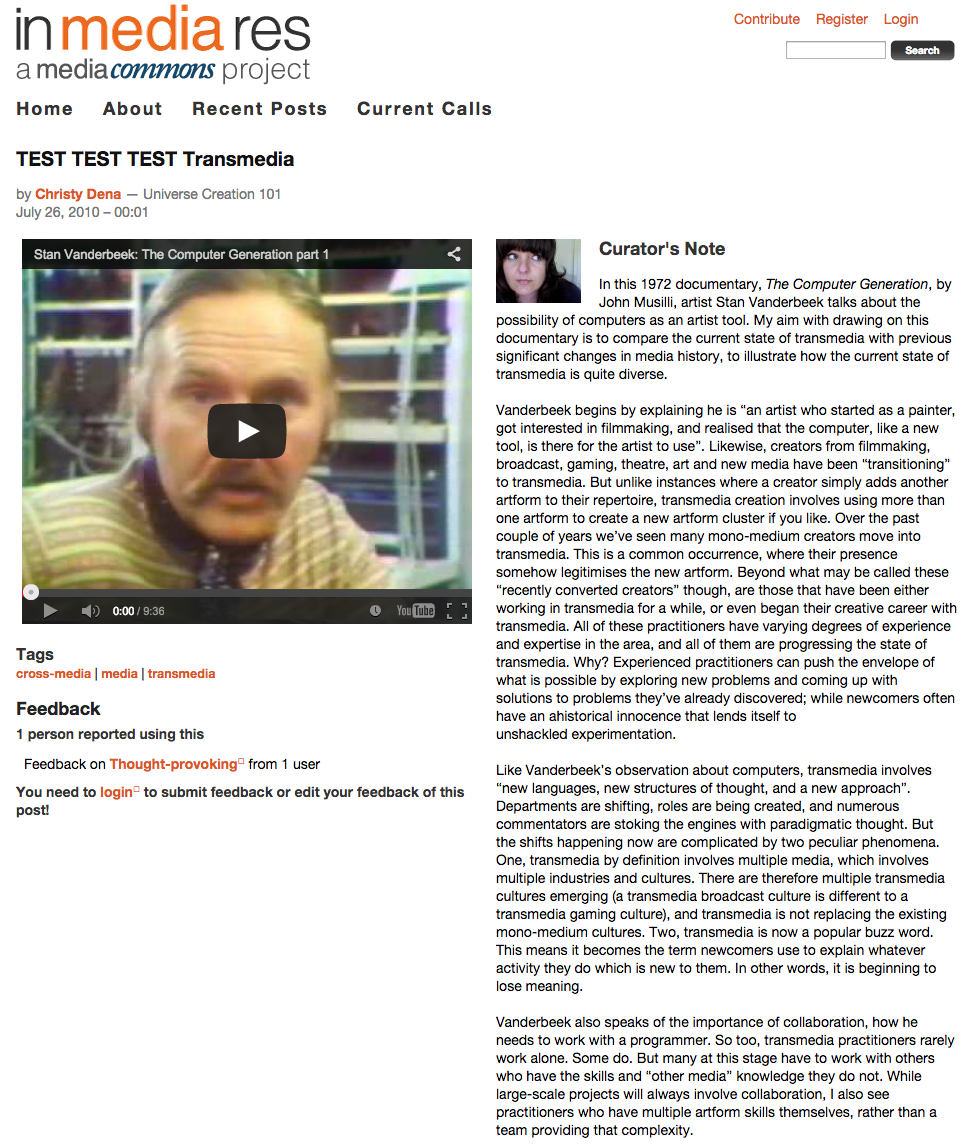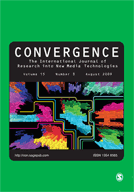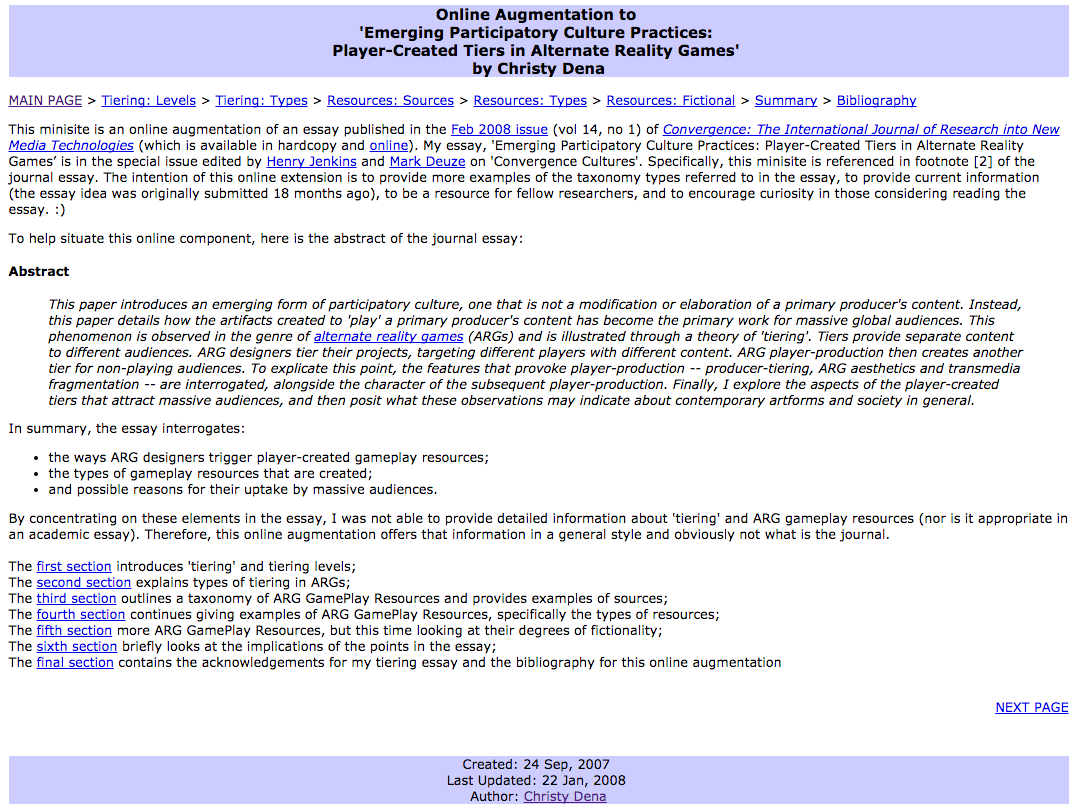A few days ago I published a post highlighting one possible reason why alternate reality games are perceived as hoaxes by some, and posited one strategy to circumvent the problem. The point seemed to caused a little confusion, as some thought I was saying that all the content and marketing should be targeted to the ARG community only. [Steve was right, this would be quicker over a beer at a conference.] To be clear, that is not how I see a launch operates in any scenario. Launches require putting lots of content out into different communities of interest. My point was that a work that looks indistinguishable from real content would benefit from having a community that identifies it as fiction early in the launch process. That is: to target the ARG community in the first wave. Whether other communities are targeted at the same time or slightly after is a design approach relative to the creator — but the point is to include an ARG community early.
But, since focusing on one strategy in isolation is evidently not the most effective approach, I will step back and look at the bigger picture. One of the issues with ARGs is that they are often referred to as hoaxes, and sometimes (rarely) experienced as hoaxes. So my questions have been:
1) Are ARGs hoaxes?
2) Why are ARGs referred to hoaxes?
3) Why are some ARGs experienced as a hoax?
4) Why is it most ARGs not experienced as hoaxes?
And here are the answers:






